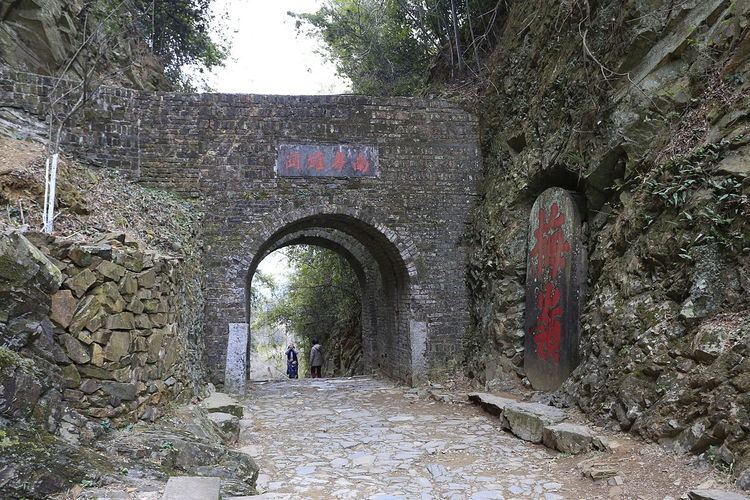Prefecture-level city Shaoguan Province Jiangxi | Time zone China Standard (UTC+8) | |
 | ||
Country People's Republic of China Address Dayu, Ganzhou, Jiangxi, China | ||
Mei mei pass motion
Mei Pass (simplified Chinese: 梅关; traditional Chinese: 梅關; pinyin: Méi Guān; literally: "Plum Pass") is a strategic site around 30 kilometres (19 mi) north of Nanxiong in Guangdong, China. It is situated in the Meiling Mountains (梅岭) and forms the boundary between the provinces of Jiangxi and Guangdong.
Contents
The site of Mei Pass has been significant since the Qin dynasty (221BCE – 206CE) and its name probably dates from this early period. It was part of one of the five transport routes from the Yangtze valley to Nanhai in present-day Guangzhou. During the Tang (618–907), the site was variously called Qin Pass (秦关) and Hengpu Pass (横浦关). In 716, the Chancellor Zhang Jiuling constructed a 5 metres (16 ft) wide road through the pass as part of the trade route along the Gan River. Of the old gallery road, Zhang wrote:
During the Song dynasty (960–1279), fortifications were constructed on the pass and the characters representing Mei Pass were carved on it. The Tang road was improved with brick paving. The surviving fortifications have the words "Majestic pass of Nanyue" (南粤雄关) carved on the northern side and "First pass of Lingnan" (岭南第一关) carved on the other side. (Both Nanyue and Lingnan are alternative names for Guangdong.)
Until recent decades, Mei Pass was an important thoroughfare for the overland trade south to Guangdong, as well as a militarily significant boundary. In 1928, Mao Zedong attempted to cross the pass from Jiangxi into Guangdong. In the 1930s, the Communist commander Chen Yi spent three years in the vicinity of Mei Pass fighting a protracted guerilla war against Kuomintang encirclement.
Mei Pass has been designated as a Cultural Relic Protection Unit by the provincial authorities and draws small numbers of domestic tourists. Around 8 kilometres (5.0 mi) of the Tang road and most of the Song fortifications are still extant. Most tourists visit in winter, when the plum blossoms are in full bloom.
